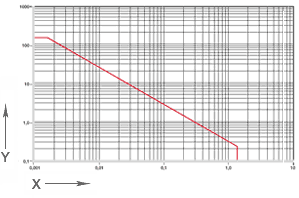In addition to iglidur® X, iglidur® Z is among the best selling iglidur® high-temperature materials. The outstanding wear behavior under extreme conditions (high loads and temperatures) is particularly noteworthy.
iglidur® Z - Material data
| General features | Unit | iglidur® Z | test method |
| Density | g/cm³ | 1,40 | |
| Colour | Brown | ||
| Max. humidity absorption at 23°C/50% R. H. | % weight | 0,3 | DIN 53495 |
| Max. water absorption | % weight | 1,1 | |
| Coefficient of surface friction, dynamic, against steel | µ | 0,06 - 0,14 | |
| PV values max. (dry) | MPa x m/s | 0,84 | |
Mechanical properties |
|||
| Bending E-module | MPa | 2.400 | DIN 53457 |
| Tensile strength at +20 °C | MPa | 95 | DIN 53452 |
| compressive strength | MPa | 65 | |
| Maximum recommended surface pressure (20° C) | MPa | 150 | |
| Shore D hardness | 81 | DIN 53505 | |
Physical and thermal properties |
|||
| Max. long term application temperature | °C | +250 | |
| Max. short term application temperature | °C | +310 | |
| Lower application temperature | °C | -100 | |
| Heat conductivity | [W/m x K] | 0,62 | ASTM C 177 |
| Coefficient of thermal expansion (at 23° C) | [K-1 x 10-5] | 4 | DIN 53752 |
Electrical properties |
|||
| Specific forward resistance | Ωcm | > 1011 | DIN IEC 93 |
| Surface resistance | Ω | > 1011 | DIN 53482 |
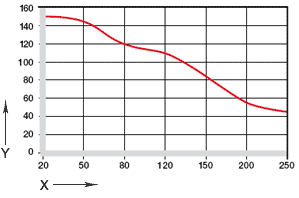
Figure 02: Maximum recommended surface pressure dependent on the temperature (150 MPa to +20 °C)
X = Temperature [°C]
Y = Load [MPa]
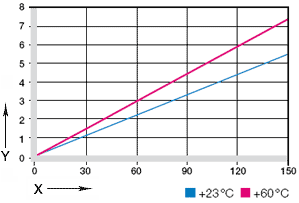
Figure 03: Deformation under load and temperatures
X = Load [MPa]
Y = Deformation [%]
Maximum recommended surface pressure represents a mechanical material parameter. Tribological conclusions cannot be drawn from it.
With increasing temperatures, the compressive strength of iglidur® Z plain bearings decreases. Fig. 02 clarifies this connection.
Figure 03 shows the elastic deformation of iglidur® Z with radial loads. The deformation is about 5.5% at 150 MPa.
| m/s | Rotary | oscillating | Linear |
| Constant | 1,5 | 1,1 | 5 |
| Short-term | 3,5 | 2,5 | 6 |
iglidur® Z is a high-temperature material suitable for applications with extremely high specific loads. The maximum values stated in Table 03 can be attained only with minor pressure loads. At the specified speeds, an increase in temperature up to the long-term permitted value can occur due to friction. In practice these limit values are not always reached due to interactions.
| iglidur® Z | Operating temperature |
| Lower | - 100 °C |
| Upper, long-term | + 250 °C |
| Upper, short-term | + 310 °C |
| Secure axially in addition | +145° C |
The short-term permitted maximum temperature is + 310°C. The temperatures prevailing in the bearing system also have an influence on the bearing wear. The wear rises with increasing temperatures. Under high temperatures, iglidur® Z is also the most wear-resistant material in dry operation. An additional securing is recommended at temperatures higher than +145°C.
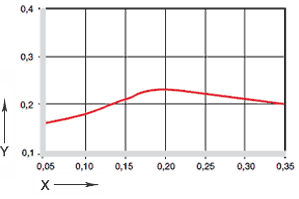
Figure 04: Coefficients of friction dependent on the surface speed, p = 0,75 MPa
X = Surface speed [m/s]
Y = Coefficient of friction μ
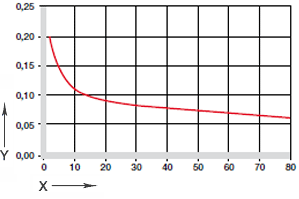
Figure 05: Coefficients of friction dependent on the load, v = 0,01 m/s
X = Load [MPa]
Y = Coefficient of friction [μ]
The coefficient of friction lowers like the wear resistance with increasing load (Fig. 04 and 05).
| iglidur® Z | Dry | Grease | Oil | Water |
| Coefficients of friction µ | 0,06 - 0,14 | 0,09 | 0,04 | 0,04 |
Table 04: Coefficients of friction for iglidur® Z against steel
(Ra = 1 µm, 50 HRC)
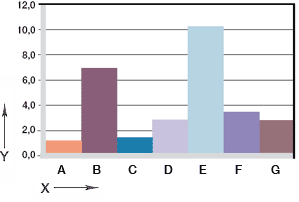
Fig. 06: Wear, rotating application with different shaft materials, load p = 1 MPa, v = 0,3 m/s
X = shaft materials
Y = wear [μm/km]
A = Aluminum, hard-anodized
B = machining steel
C = Cf53
D = Cf53, hard chrome-plated
E = St37
F = V2A
G = X90
The Fig. 06 shows, in the lower load range, wear rates that are by all means similar to that of other extremely wear-resistant iglidur® materials. In the upper range in contrast, iglidur® Z outclasses all other materials in wear resistance. If a Cf53 shaft is used, the wear is only 15 µm/km even with 45 MPa.
With low loads, the iglidur® Z bearings wear out less in pivoting applications than in rotating applications The V2A and hard-chromed shafts stand out in particular here.
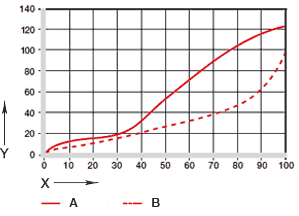
Fig. 07: Wear with oscillating and rotating applications with Cf53 as a function of the load
X = Load [MPa]
Y = Wear [μm/km]
A = rotating
B = oscillating
| Medium | Resistance |
| Alcohols | 0 |
| Hydrocarbons | + |
| Greases, oils without additives | + |
| Fuels | + |
| Diluted acids | + |
| Strong acids | - |
| Diluted bases | + |
| Strong bases | - |
All specifications at room temperature[+20 °C]
Table 05: Chemical resistance of the iglidur® bearings Z
Electrical properties
| Specific forward resistance | > 1011 Ωcm |
| Surface resistance | > 1011 Ω |
iglidur® Z bearings have a good resistance against chemicals. They possess an excellent resistance to organic solvents, fuels, oils and fats. The material is only partially resistant to weak acids.
iglidur® Z bearings are radiation resistant up to a radioactive intensity of 1 x 105 Gy.
With UV radiation, the tribological properties (wear-resistance) of the iglidur® Z bearings drop by about 50%.
In application in vacuum, the potentially existent moisture content is degassed. For this reason only the dry iglidur® Z bearings are suitable for vacuum.
iglidur® Z bearings are electrically insulating.
| Maximum moisture absorption | by +23 °C/50 % r. F. | 0,3 weight-% |
|---|---|
| Max. water absorption | 1,1 weight-% |
Table 06: Moisture absorption
The humidity absorption of iglidur® 200 bearings amounts to about 0,3% in standard climatic conditions. The saturation limit in water is 1,1 %.
| Diameter d1 [mm] |
Shaft h9 [mm] |
iglidur® Z F10 [mm] |
Housing H7 [mm] |
| up to 3 | 0 - 0,025 | +0,006 +0,046 | 0 +0,010 |
| > 3 bis 6 | 0 - 0,030 | +0,010 +0,058 | 0 +0,012 |
| > 6 bis 10 | 0 - 0,036 | +0,013 +0,071 | 0 +0,015 |
| > 10 bis 18 | 0 - 0,043 | +0,016 +0,086 | 0 +0,018 |
| > 18 bis 30 | 0 - 0,052 | +0,020 +0,104 | 0 +0,021 |
| > 30 bis 50 | 0 - 0,062 | +0,025 +0,125 | 0 +0,025 |
| > 50 bis 80 | 0 - 0,074 | +0,030 +0,150 | 0 +0,030 |
| > 80 bis 120 | 0 - 0,087 | +0,036 +0,176 | 0 +0,035 |
Table 07: Important tolerances according to ISO 3547-1 after the press-in
iglidur® Z- bearings are standard bearings for shafts with h-tolerance (recommended minimum h9). The bearings are designed for press-fit in a housing with h7 tolerance. After the installation in a housing with nominal diameter, the inner diameter of the bearing automatically adjusts to the F10 tolerance. In certain dimensions the tolerance in dependence on the wall thickness deviates from this (See delivery program )
More than 100,000 products available! Delivery and consultation Mon-Fri from 7am-8pm and Sat from 8am-12pm!
